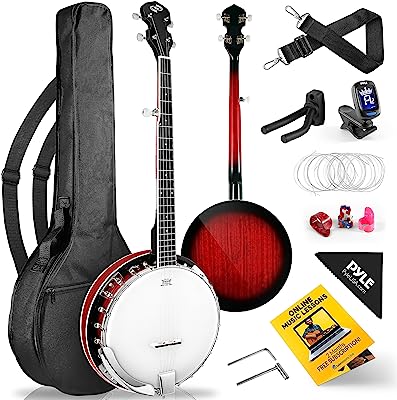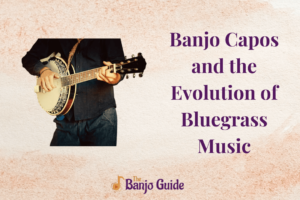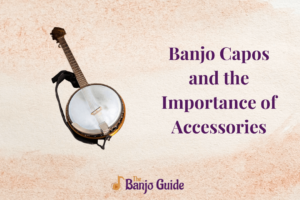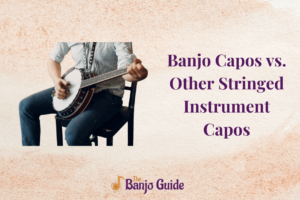The Structure And Anatomy Of A Banjo
As you think about a Banjo, the first thing that you visualize is a stringed instrument that sounds beautiful by the way a musician plays it. Yes, you are absolutely correct! But it is also true that this simple-looking stringed instrument is actually a little complex in its nature. Multiple parts complete a Banjo. Can you recall what are the parts of a Banjo called? Find out about them here.
Parts Of A Banjo
In Banjo you will find a whole lot of unique parts. But this list covers some of the most important ones only.
- Headstock: It is found towards the top of this instrument where pegs are situated. In fact, you will find the pegs on the back of it. Strings are attached to the pegs in the front with bolts. The headstock is meant for utility and so it is carved in a very ornate manner.
- The Nut: On the base of the headstock you will find the nuts either made of plastic or ebony. The slots in them keep the strings connected to the neck. To maintain a Banjo properly, it is important to verify if the strings got appropriately wounded to the nuts.
- Strings: These days Banjos are made using five strings with being open-G tuned. You may also find that only four strings of it are connected to the headstock and the fifth one is a bit shorter. It is attached towards the lower neck. It is the steel strings that give it the iconic sound but there are nylon-stringed ones too.
- Tuners: These are knobs attached to the headstock. The right and left movements of them adjust the strings leading to various patterns in sound. Four turners are connected by the headstock and the fifth one is a little lower to the neck where the fifth string is.
- The Fingerboard: It is the hardwood board on the front. It also has inlays of steel or silver and the musicians form the cords along it.
- Neck: The fingerboard also happens to be a part of the neck. The length of the neck differs from model to model. The standard size is 25.5 inches.
- Frets: These are made of nickel or silver and are pressed into the fingerboard. It helps in changing the pitch and match with the frequency of the sound.
- Pot Assembly: It is the belly of the instrument and impacts the sounds when the string is plucked.
- Truss Rod: It is below the fingerboard helping you to manage the curvature and strings.
- Head: It is made of mylar material and helps in balancing the sound of the strings.
- Tension Hoop: It is the outer ring on the head made of steel or brass and manages the volume and resonance.

I own a music instruments shop. My go to instrument is a banjo. My business makes it easier for me to access the instruments from various brands and of various types. I will give my honest opinion here to help out others in choosing the right instrument for them.




